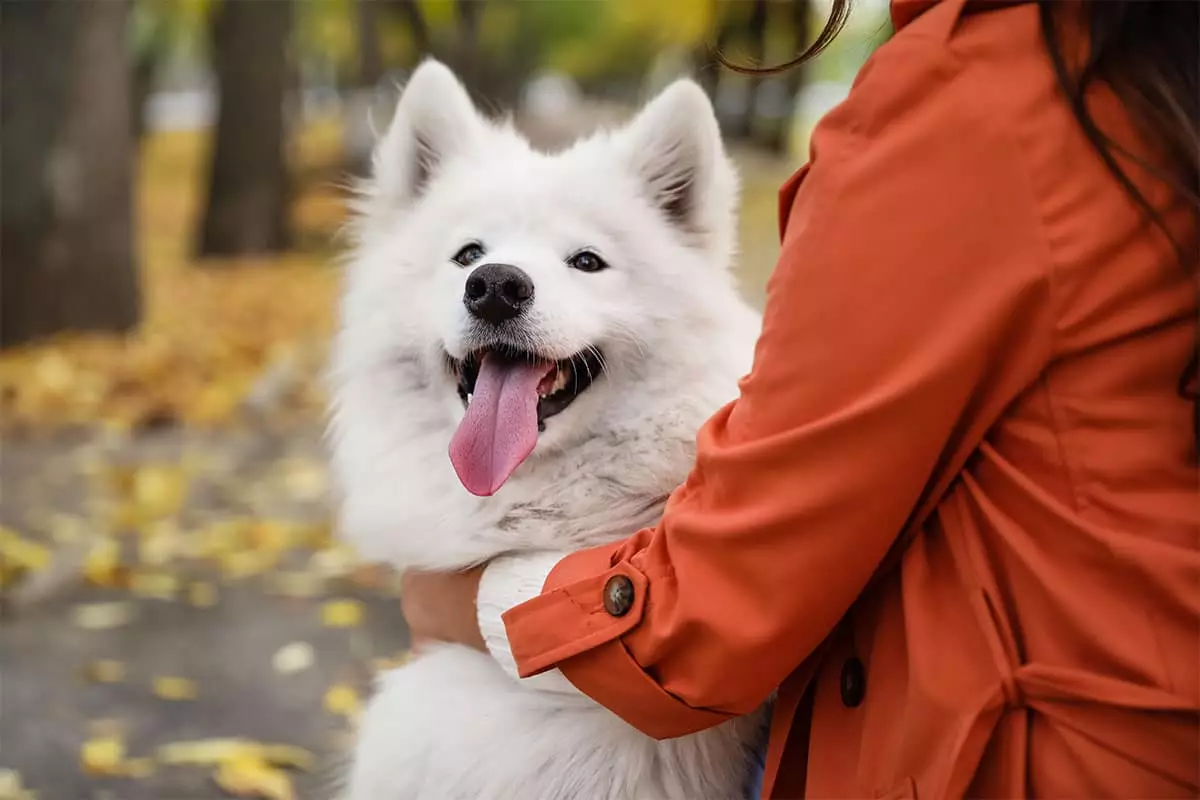There’s something profoundly magnetic about dogs with thick, plush coats that speak directly to our primal urge for comfort and affection. These aren’t just ordinary pets; they’re living embodiments of warmth and softness, packing personality and fluff into every inch of their bodies. The experience of hugging such a dog transcends typical pet ownership — it’s an intimate exchange of comfort, love, and tactile joy that few animals can replicate. While many dogs bring companionship and loyalty, fluffy breeds evoke an almost irresistible need to hold and be held, bridging a unique connection between human and animal.
This tactile craving isn’t superficial; it’s rooted in the emotional security that softness provides. When you wrap your arms around a fluffy dog, you don’t just feel their fur — you feel an emotional cushion, one that invites calm, happiness, and reassurance. This powerful effect explains why the fluff factor is often as critical as temperament when choosing a canine companion for emotional support or simply life’s everyday warmth.
Fluffy Breeds That Double As Living Plush Toys
Among the pantheon of fluff-laden dogs, breeds like the Samoyed, Chow Chow, and Newfoundlands are the true royalty of cuddliness, offering more than just a warm fur coat. The Samoyed’s vivid white coat and famous “Sammy smile” make it the quintessential “walking marshmallow,” exuberant in both affection and appearance. This breed’s joyfulness makes every hug feel celebratory, as if you’re wrapping yourself around pure sunshine disguised as a dog.
The Chow Chow, meanwhile, commands a different kind of awe — a majestic, lion-esque figure wrapped in a dense, bear-like coat. Its reserved nature belies a fiercely loyal heart, making each cuddle with this breed an earned and treasured moment of intimacy. Rather than a casual hug, embracing a Chow Chow feels like sharing a luxurious secret with a noble guardian of fluff.
Kathedral giants like the Newfoundland and Great Pyrenees turn the concept of a “cuddle buddy” into a full-scale, enveloping experience. Newfoundlands embody gentle resilience, their colossal size paired with their soft fur and tender nature creating snuggles that feel like being hugged by a benevolent giant. The Great Pyrenees, bred to protect flocks in harsh mountain climbs, offer a calm, steady heart beneath their thick snow-white coats; their hugs carry a reassuring weight that soothes both body and soul.
Small Wonders: The Magic of Compact Fluff
Fluff doesn’t have to come in colossal size to deliver joy. Smaller breeds like the Pomeranian and Bichon Frise prove that compact fluffiness can pack an enormous emotional punch. Pomeranians, with their irresistibly poofy double coats and lively spirits, are like tiny clouds filled with sass and affection. Cuddling one is not just a sensory treat but a full-bodied communication of love and personality.
Similarly, the Bichon Frise resembles a powder puff imbued with cheer and energy. Their springy, curly coats invite perpetual snuggles, while their bright eyes and upbeat demeanor light up any hug session. Unlike larger dogs whose embrace is full-bodied and encompassing, these smaller fluff balls offer a portable, lively source of comfort that travels well and fits snugly on laps and shoulders.
The Emotional Resonance Behind Fluff
What these varied breeds have in common is their innate ability to form emotional bonds that transcend routine pet-owner relationships. Dogs like Keeshonds, Finnish Lapphunds, and Shetland Sheepdogs aren’t just known for their thick, attractive coats—they’re celebrated for their warmth and storytelling eyes. Their fluff works on multiple levels: it invites touch, signals softness and approachability, and becomes a metaphor for emotional availability.
When you hug a dog with this kind of fluff, you engage in a nonverbal conversation of trust and affection. This serves a critical psychological role, especially in an age where human interaction can sometimes feel fractured or hurried. These dogs offer an unmediated sensory experience that calms cortisol levels and promotes feelings of safety and happiness. The relationship with a fluffy dog, therefore, is far more than physical; it’s therapeutic, grounding, and profoundly enriching.
Beyond the Fur: Why Texture and Personality Must Align
While the fluff factor is undeniably attractive, it’s essential to recognize that a dog’s temperament must harmonize with its soft exterior for a truly rewarding cuddling experience. Many fluffy breeds come with high grooming needs, specific exercise habits, or personality traits that don’t necessarily mesh with every household or lifestyle.
For example, Tibetan Mastiffs flaunt a mythical, lion-like mane and a protective nature, making their cuddles epic but selectively earned. In contrast, breeds like American Eskimo Dogs and Bernese Mountain Dogs combine their luxurious coats with a perpetually friendly disposition that practically begs for constant contact. Knowing what kind of affection a dog craves and delivers is just as crucial as admiring its aesthetics.
Choosing a fluffy dog purely for appearance without respecting its emotional and practical needs often leads to frustration for both dog and owner. To really harness the power of fluff, one must embrace the breed’s behavioral essence as much as its tactile delights.
The Transformative Warmth of Embracing Fluff
Ultimately, fluffy dogs don’t merely provide physical warmth — they offer an emotional sanctuary that few other interactions can replicate. Each breed carries a unique flavor of affection wrapped in layers of fur, making every embrace a celebration of love and connection. These dogs redefine what it means to share space with an animal, embodying the purest form of tactile empathy.
In a world that increasingly values virtual interactions, the tangible joy of hugging a fluffy dog reminds us of the primal comfort found in touch and presence. They aren’t just pets; they’re soulful fabrics of joy and solace woven into everyday life, ready to turn ordinary moments into lasting memories filled with the silent language of softness and trust.

